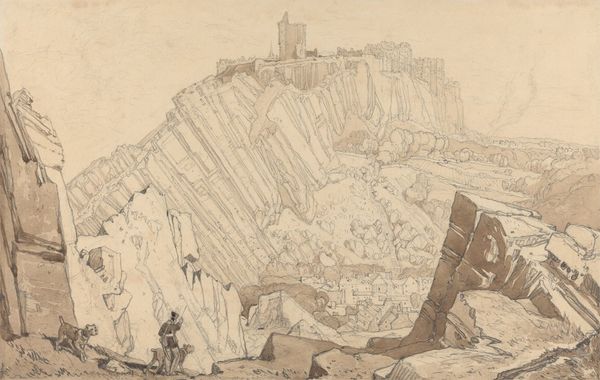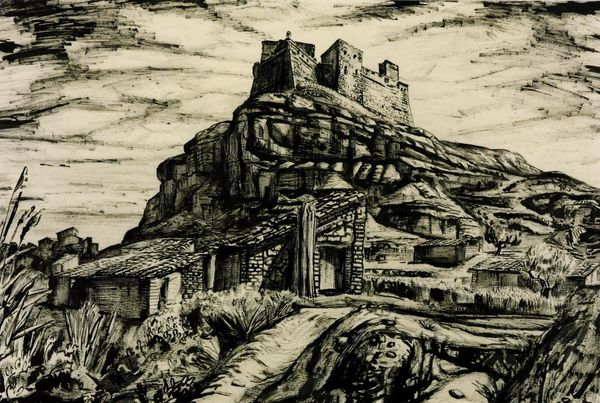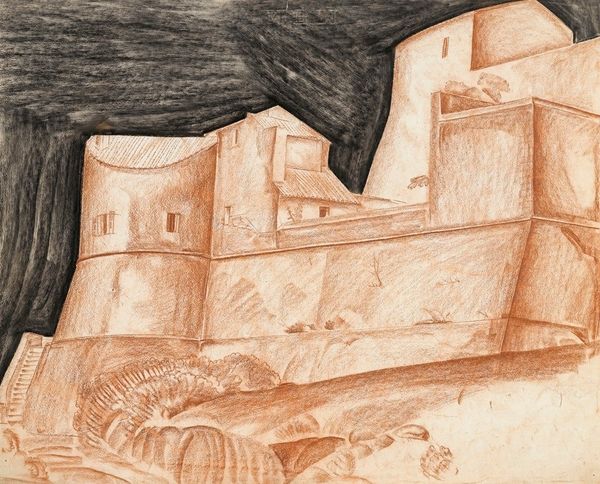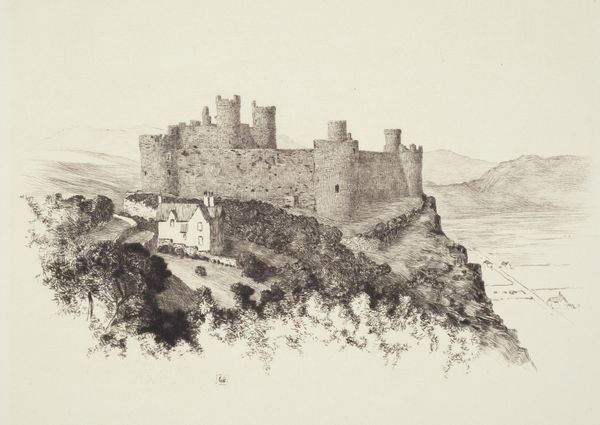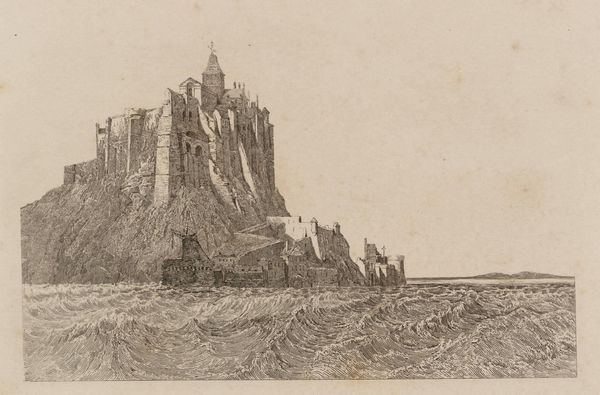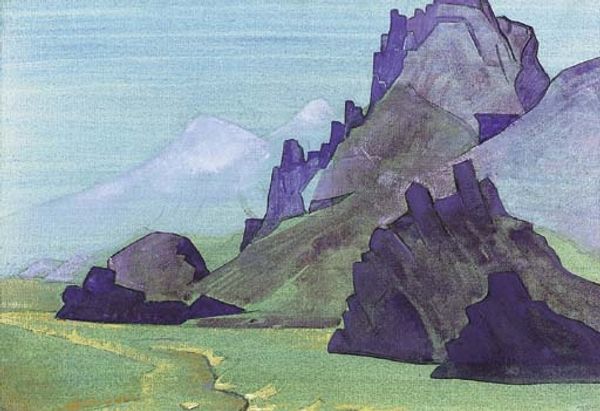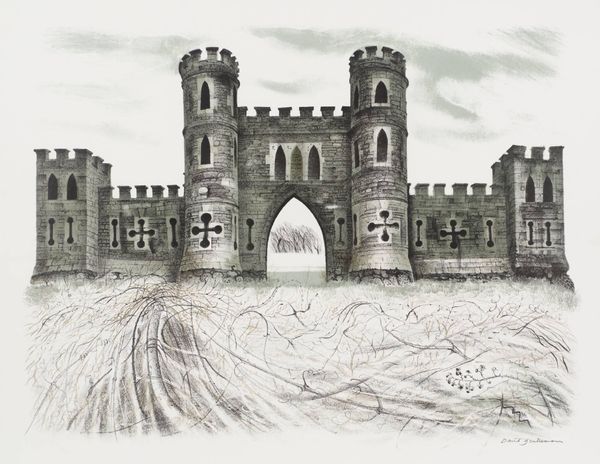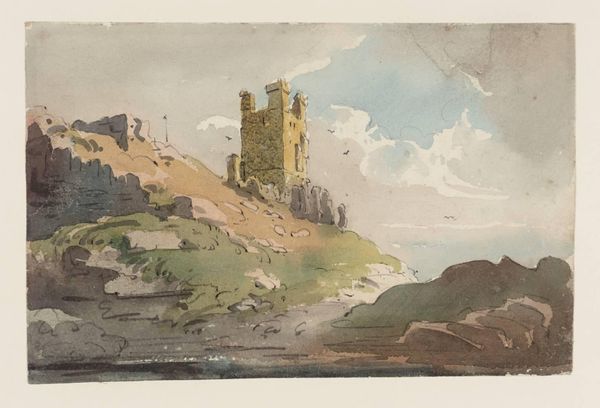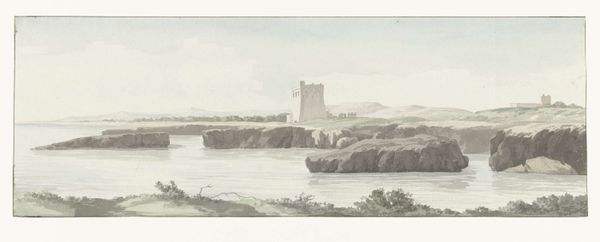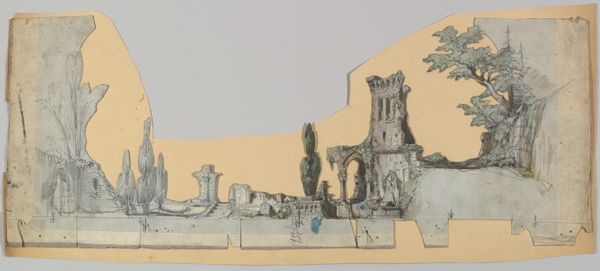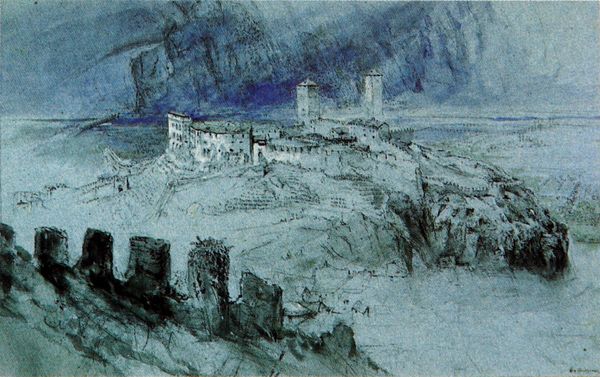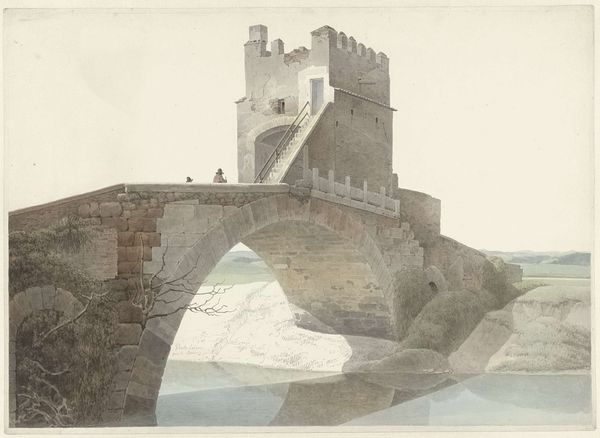
Dimensions: image: 445 x 645 mm
Copyright: © David Gentleman | CC-BY-NC-ND 4.0 DEED, Photo: Tate
Curator: Looking at David Gentleman's "Dunstanburgh Castle," I'm immediately struck by the weight of those stones in the foreground. It feels like an inevitability, the castle's slow return to the earth. Editor: Indeed. Gentleman's lithograph captures a sense of historical layering. The castle, perched atop the hill, is a monument to power, but the erosion suggests the transience of human ambition, how time subverts these structures. Curator: And think of castles themselves! They're potent symbols of protection and dominance, evolving from wooden structures to imposing stone fortresses. This ruin evokes our own psychological need for safety, now weathered and incomplete. Editor: Absolutely. And in a broader social context, consider the romanticization of ruins during the 18th and 19th centuries. Dunstanburgh, like many castles, became a site for artists and tourists, a symbol of national identity and a link to a storied past. Curator: Right, and these stones become visual anchors in that narrative, connecting us not just to the specific history of Dunstanburgh, but to the larger, shared cultural understanding of what a castle ruin represents. Editor: It's a powerful reminder that our present is always shaped by the remnants of the past. Curator: Well said. It prompts consideration about how we build and what we leave behind.
